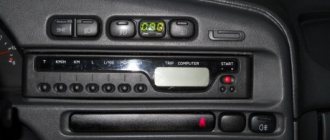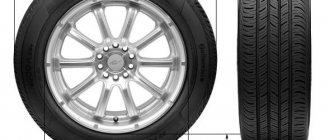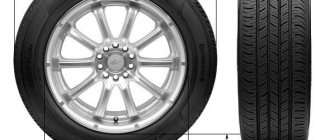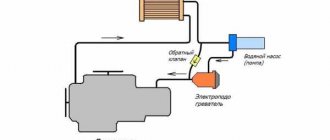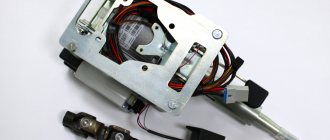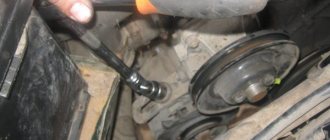Webasto engine preheaters are widely known throughout the world and have become widespread on different models and types of vehicles. The name Webasto in everyday life is often used today to refer to the very fact that the power unit is additionally equipped with an autonomous engine heater.
We also recommend reading an article about what Webasto is, what types there are and on what principle engine pre-heaters of this brand work. From this article you will learn about the main features, as well as the advantages and disadvantages of Webasto heaters.
It should not be forgotten that in addition to Webasto, there are other solutions from various manufacturers on the market. For example, as a worthy alternative to Webasto, many drivers choose Eberspacher Hydronic preheaters.
Also on the market are Russian Binar (Binar-5), Planar, Teplostar and similar analogues. In this article we will talk about how Hydronic differs from Webasto, and we will also try to answer the frequently asked question of what is better to choose, Binar, Webasto or Hydronic.
What it is
Let's start with a simple definition of the concept of a Hydronic preheater.
This is a special autonomous system designed to warm up the vehicle before starting the engine itself. Not only the engine, but also the interior can heat the device to create optimal temperature conditions. By carrying out pre-start preparation of the power plant, it is possible not only to reduce the rate of wear of engine components, but also to have a positive effect on reducing fuel consumption. The interior heating function creates the necessary level of comfort for the driver and passengers of his car.
If we talk about what a Hydronic installed in a car is, it can be described as a mini-engine. It replaces the engine of the car itself, performing warm-up functions. Heaters are used when car owners themselves are still sitting at home, having breakfast, solving some household issues, but intend to get behind the wheel in the near future and go on business.
Hydronic is capable of heating the power plant itself, providing a comfortable temperature inside the cabin, and defrosting the windshield wipers and windshield.
Hydronic is manufactured by a company from Germany with the rather complex name Eberspacher. Perhaps it is precisely because of the difficulty of pronunciation that people mostly hear the name of the model range of manufactured preheaters.
Some will be interested to know that this German company actually started out with completely different products. After its founding, which dates back to 1865, the company specialized in metal frames intended for glazing roofs. Already as a result of its long existence, modernization of production and repurposing, the manufacturer switched to the creation of pre-heaters, as well as a wide range of other devices.
An important feature of Hydronic is not only that it warms up the engine and the interior of the car. The device is also capable of performing a reheating function.
That is, the device provides support to the engine, helping it reach optimal temperature levels in a shorter period of time.
The device operates remotely. Using a special remote control, you can start the heater from a certain distance. This allows you not to leave your apartment or house to start the warming up process. Usually, drivers simply look out of a window or from a balcony, press a button and Hydronic starts working.
Common features
What is a cylinder head in a car?
After replacing the cylinder head gasket, the car does not start, what to do? What is a cylinder head in a car? Both the Hydronic and the Webasto are based on the same principle of operation: the heater is included in a small cooling circle of the car, the fuel coming from the tank burns in the chamber allocated for it and heats the cooler. Antifreeze with a raised temperature is sent to both the engine and the stove. For diesel engines, an additional reheating function is provided: if the antifreeze cools too much while driving (the temperature drops below the set temperature), the heater turns on and brings it to the required degree. Identity is maintained even in the production of individual components. In particular, electronics for both brands are supplied by one manufacturer -.
Models from 118 to 430 kW
| Standard size | A | B | C | V |
| Hydronic 118 | 854 | 1007 | 600 | 254 |
| Hydronic 140 | 981 | 1134 | 575 | 305 |
| Hydronic 170 | 1124 | 1276 | 575 | 305 |
| Hydronic 200 | 1286 | 1438 | 549 | 356 |
| Hydronic 240 | 1473 | 1626 | 524 | 406 |
| Hydronic 280 | 1683 | 1835 | 524 | 406 |
| Hydronic 340 | 1930 | 2083 | 498 | 457 |
| Hydronic 395 | 2169 | 2321 | 498 | 457 |
| Hydronic 430 | 2340 | 2492 | 498 | 457 |
Scope of application and installation
What is an arrow
Option for installing Hydronic in the engine compartment
It is designed for different types of transport - from small compact cars to trucks and buses. For this purpose, heater options are available with different heating powers, so the ideal choice depends on the engine size, and, consequently, the volume of coolant.
For an engine whose volume does not exceed 2.2 liters, the ideal option would be to install the hydronic model - 4. Volume from 2.3 to 5.5 liters requires the installation of hydronic - 5. Models numbered 10 are suitable for engines from 5.5 up to 15 liters, and 24-35 are suitable for large volumes of coolant and are installed on buses and trucks. By the way, about the sizes. In this regard, the latest Eberspächer Hydronic models have a big advantage, since their design consists of several elements and the pump is made separately. This positive feature allows you to place the preheater in the engine compartment of almost any car. Installation locations can vary significantly depending on the model and brand of machine:
- Behind the bumper (heater manufacturers recommend);
- In the engine compartment;
- In the wheel well;
- On the bottom of the car.
Since the coolant heater is a technically complex device that is connected to all operating systems of the car, it is better to entrust the installation of Hydronic to professionals. In addition, its installation requires special tools. The statistics of car damage due to incorrect installation of the heater is amazing - almost 80% of accidents or equipment breakdowns occur precisely for this reason. Installation of equipment by specialists will cost from 8 to 15 thousand rubles, but will allow you to protect yourself and your car. Also, do not violate the operating conditions of the equipment - repairs are carried out only in specialized service centers and are quite expensive. Well, we looked at what Hydronic is in a car, its operating principle and features. In conclusion, I would like to remind you that pre-heaters consume electricity for their operation, so you must monitor the condition of the battery and follow the rule - the operating time of Hydronic should not exceed the time the vehicle is moving.
Features and differences of Hydronic and Webasto heaters
So, let's start with general information and the complexity of selection, and also touch on the thermal power in different operating modes of the heaters. At the same time, we will touch upon the issue of fuel consumption and loads on the on-board network, the intensity of battery discharge, overall dimensions and a number of other important parameters.
- Webasto preheaters are offered for both gasoline and diesel engines. For passenger cars, the company offers different models that differ in power.
As an example:
- Webasto preheater for passenger vehicles whose engine capacity does not exceed 2.0 liters;
- heater for cars with an engine from 2.2 liters;
- autonomous heating boilers for commercial vehicles and SUVs with an engine capacity of 4.0 liters or more, etc.
Webasto heaters can additionally be equipped with a programmable timer, remote control, and GSM module. Among the main disadvantages, consumers note the high initial cost of installation kits, spare parts and additional equipment, and the freezing of liquid crystal screens on standard controls in severe frosts.
- As for Eberspächer and Hydronic, in the manufacturer’s catalog you can also find various models for various types of vehicles and power units installed on vehicles. Retrofitting options also include different heater controls.
For example:
- Hydronic 4 heater for cars with a volume of up to 2.0 liters;
- Heater Hydronic 5 for vehicles with engines over 2.0 liters;
- Hydronic MII model for trucks, commercial vehicles and special equipment with engines of 5.5 liters or more, etc.;
The products of both manufacturers are suitable for use as pre-starting autonomous heaters for the engine and car interior. It becomes clear that in the list of proposed solutions from each heater manufacturer you can find a suitable option for any type of car.
Let's move on. As mentioned above, today the main differences between Webasto and Hydronic for the average buyer come down to ease of selection, affordability, features and ease of installation. Also, special attention is paid to the warranty policy, the number of service centers, the general maintainability of heaters, the simplicity and cost of post-warranty repairs and maintenance.
As for selection, it is much easier to decide on the required model in each specific case when choosing from Webasto catalogs. In this case, you need to take into account the main differences in power (4-5 kW) and type of internal combustion engine.
Please note that when selecting from Eberspächer products, additional difficulties may arise, since there are more types of boilers (spaced and non-spaced), standard, Compact/Comfort series, etc. Then from each series you need to select a suitable 4 or 5 kW heater.
Such features indicate that in the case of Hydronic, as a rule, additional professional advice is required. You should also understand in more detail the intricacies of installation and other nuances of installing this or that type of heater from this company.
Heater installation
Note that the basic installation of Webasto and Hydronic does not imply any significant differences, since these devices operate on the same principle. At the same time, the Eberspächer installation kit can be considered more complete, which somewhat simplifies installation in some cases. We also add that the Webasto heater is packaged much better.
We also recommend reading the article on how to install a Webasto pre-heater on a gasoline or diesel engine yourself. From this article you will learn what instructions and recommendations you should follow when installing Webasto on a car yourself.
As for the individual installation features, I would like to separately mention some points. Taking into account the fact that each manufacturer offers several options for heaters for gasoline and diesel internal combustion engines, for objectivity it is necessary to compare two devices with similar characteristics (for example, Hydronic 2 Economy and Webasto ThermoTop).
It should be noted that the Webasto product has two nozzles for standard insertion into the cooling system. Cold antifreeze is supplied to the first nozzle, after which heated coolant emerges from the second. This design assumes the usual installation scheme, when an insertion is made into the circuit in front of the internal combustion engine inlet.
In turn, the design of the Hydronic model compared with its competitor has three nozzles, not two. There is one input nozzle, but two output nozzles. This feature allows you to install this heater in different ways.
- The first method is similar to installing Webasto, that is, one of the outputs is silenced, and the heater itself warms up the engine circuit and the heater radiator.
- The second solution allows you to connect the heater so that the main emphasis will be on driver comfort and warming up the interior space, rather than the internal combustion engine. First of all, the heater radiator circuit warms up, while the power unit circuit is turned off.
When the interior heating circuit is heated to a temperature of about 65 degrees, and this happens quite quickly, the circuit is then opened to the engine, without significant heat losses. According to this scheme, two circuits are heated with priority for heating the interior.
- Another connection option allows you to prioritize warming up the engine, and only then the interior. The scheme resembles the second method, but the internal combustion engine circuit warms up first, while the interior heating is turned off.
After the coolant in the engine circuit has warmed up to the required temperature, parallel heating of the cabin circuit begins, that is, two circuits are activated. This connection method allows you to warm up the internal combustion engine as quickly as possible and facilitate cold starts.
We also add that many installers note the lower performance of the Hydronic metering fuel pump compared to Webasto. Based on this, during installation it is necessary to take fuel from the fuel tank only through a special fuel intake.
Productivity and efficiency
Now let's talk about efficiency and power. Based on the data provided by the manufacturers, then the new generation of Webasto heaters is more economical compared to its competitor Eberspächer.
A comparative analysis of the various characteristics of two similar competing models Webasto E and Hydronic 4 allows us to draw the following main conclusions:
- the Webasto heater has smaller block dimensions, that is, it is simpler and easier to install the device;
- immediately after starting and starting to warm up, Hydronic provides better heat performance;
- The power consumption at maximum performance is lower for Webasto. This means that the device does not consume battery power so intensively;
- the Webasto heater looks like a more economical solution in terms of fuel consumption;
It should be added that the thermal power of Hydronic compared to its competitor is higher only when operating at maximum load, but turns out to be lower under partial load conditions. Also, Webasto's fuel consumption at maximum load is almost 20% less.
Considering that Hydronic discharges the battery more strongly, this can significantly complicate starting the internal combustion engine during severe frosts or in the case of using an undercharged/worn-out battery.
Prices, warranty, repairs and maintenance
The current pricing policy of both competing brands is such that today you can buy Webasto or Hydronic for almost the same price. It should be taken into account that the price for Webasto is usually fixed at various dealerships.
In the case of Hydronic, this practice is less common, so prices for heaters from this company may differ from different sellers. This allows for a wider choice, as there is a chance to purchase a product at a lower price than the average price.
Taking into account this fact, Webasto products in practice may turn out to be 3-5% more expensive, but such a difference does not particularly affect the choice. As for the cost of installing pre-heaters, the price will be the same (from 6 thousand rubles or more, which depends on the complexity of installation on a particular vehicle).
We also note that additional controls and controls for the Eberspacher heater are cheaper than similar analogues from Webasto. It is also possible to connect the Hydronic control via an additional alarm channel.
However, such a connection does not lead to loss of the factory warranty for the heater. If it is necessary to implement additional control of the heater from a smartphone, this feature allows you to save about 10 thousand rubles.
If we touch on the issue of warranty, repair and maintenance of heaters, then it will be cheaper to repair Hydronic than Webasto. The fact is that Eberspächer provides for separate replacement of various elements, while Webasto has developed the practice of replacing entire modules.
This means that if any individual part in a module fails, then the entire module assembly must be replaced. As a result, the cost of Webasto spare parts is higher. Compared to Webasto repairs, minor Hydronic repairs will be less expensive.
The general warranty for both types of heaters is the same and is 24 full months from the date of installation on the vehicle. However, the terms of the warranty are slightly different. Webasto has a full guarantee, but Hydronic does not provide a guarantee for all elements and types of kits.
As an example, it is worth mentioning the glow pin, which Webasto can easily change under warranty, which cannot be said about Hydronic. Also, the warranty for installation kits for trucks from Hydronic is 1 year (12 months), and Webasto gives a 2 year warranty (24 months).
Choosing the right power
What is a turbocharger on a car, its history of creation and operating principle. What is a turbocharger?
In any country, a wide variety of vehicles are used, with certain power ratings, engine displacement and other parameters. And this is an important aspect in the question of which heater from the Hydronic range should be selected and installed in your car.
The first thing you need to do is look at your engine, find out the engine size, so that the purchased pre-heater from the Hydronic series can fully cope with the task.
Hydronics are equally suitable for cars and trucks. Just what is suitable for a passenger car is unlikely to satisfy the needs of a truck. Conversely, there is no need to install Hydronic, which is designed for trucks, on a passenger car. Sometimes this is even impossible due to the large dimensions of the device.
All Hydronics produced by the German company are divided according to power indicators, which directly affects the volume of the heated area and the heating rate of the special liquid circulating through the cooling system. As a result, we can select Hydronics with parameters from 4 to 35 Volts. It is in Volts that the power of the preheater is determined.
Now let’s take a more specific look at the engine parameters and their volume to select the optimal heater model.
- For passenger car engines with a volume of no more than 2.2 liters, it will be enough to use the simplest Hydronic 4 models. Excellent price-performance ratio. Such devices consume a minimum amount of fuel, which is enough to fully preheat the engine and heat the cabin before boarding the driver and his passengers.
- For power units installed on passenger cars with a volume of 2.2-5.5 liters, more powerful 5 Volt models, that is, Hydronic 5, are suitable. They perfectly perform their tasks, efficiently consuming fuel and performing their functions efficiently.
- Minibuses and huge SUVs can benefit from the capabilities of Hydronic 10. These are already quite powerful models that passenger cars do not need.
- Hydronics for 24, 30 and 35 Volts are considered the most powerful. They are designed specifically for large passenger buses, trucks, vans, tractors and other heavy equipment. Their capabilities are enough to warm up impressive volumes of cooling liquid, as well as spacious interiors, like in passenger buses.
Remember one important pattern. The higher the power, the larger the size of the device for preheating the engine and warming up the interior. Be sure to take this point into account, since a too massive Hydronic simply may not fit in the engine compartment of your car during installation. And this will become a problem.
Comparison
Although the operating principle is the same in the models, it is implemented in different ways. From here there are further differences. First of all, the method of burning the supplied fuel differs. Webasto uses a catalytic tablet as the evaporator, while Gidronik installs a cylinder-shaped mesh into the device. Both ideas are successful and would not raise any complaints if they took into account the peculiarities of Russian fuel. However, the Germans are unaware of our realities. As a result, the tablet becomes coked quite quickly and the mesh becomes clogged. As a result, first the heater begins to malfunction and work worse, and then completely fails. Replacing the mesh with “Hydronic” will cost 2.5-3.5 thousand rubles; if the flame sensor on the Webasto tablet burns out, the situation is even worse - it is not sold separately, you need to change the combustion chamber as a set, and this is more than 10 thousand. True, this happens much less often than a clogged mesh.
- There are also design features in the layout of the heater. Webasto is much larger than its competitor, since it is a solid block. In "Gidronik" the individual components are spaced apart - the pump is made separately from the combustion chamber. As a result of this design decision, it can be installed in almost any car model. Webasto will require a fairly large free space under the hood;
- There are also differences in power consumption. “Gidronik” removes 48 W from the battery, “Webasto” only 21. This must be taken into account so as not to suddenly be left without charge on the battery;
- And finally, the price. "Gidronik" starts at 28.5 thousand rubles, "Webasto" - from 31. Installation of the first will cost 12,500, regardless of the car model and with all devices; for installation of an opponent they charge 12,500 - 14,000 plus payment for additional chips, for which you will have to pay about 5 thousand rubles.
No one claims that this opinion will be decisive when choosing which is better, Hydronic or Webasto. The only strong recommendation from professionals is not to try to install the heater yourself. The equipment is expensive and requires detailed and specific knowledge. Self-indulgence can have very unpleasant consequences. Statistics say that 80% of all cases of malfunctions of pre-heaters are caused by improper installation. And the remaining 15 are violations of the prescribed operating conditions. If you want to start without problems, pay for installation and carefully read the manual.
Operating principle and technical characteristics
Connection diagram for Hydronic to the cooling system
The heater is installed in the vehicle system and for its operation consumes fuel (from 400 to 700 ml per hour of operation) and electricity (from the battery). Therefore, for its operation it is also necessary to calculate the fuel reserves and monitor the battery charge. Gidronik's operating instructions describe the following operating principle of the device: after starting the heater, fuel and air enter the combustion chamber installed in the device, where they burn and heat the coolant. Hot antifreeze is directed through a pump into the car's cooling system, where it transfers heat to the engine, as well as to the radiator of the interior heater. The system sets temperature thresholds, upon reaching which Hydronic works partially, maintaining the temperature, turns off (if the upper limit is exceeded) or turns on automatically if the liquid begins to cool. The time for a full heating cycle is approximately 40 minutes. Its performance is comparable to several boilers, but the power consumption is significantly lower, which significantly saves battery power. During startup, Hydronic uses less charge than one low beam lamp. In addition, if the battery charge is insufficient, the heater will not start working. Having examined Hydronic and the principle of operation of the device, let’s move on to studying its technical characteristics (for a passenger car model):
- The voltage used is 12 V;
- Output power when heating from 2400 to 5000 W;
- Electrical power consumption: from 23 to 50 W;
- Overall dimensions of the device – 220 x 86 x 160 mm
- Fuel consumption during operation – 0.27 – 0.62 l/hour
- Hydronic weight from 2.9 kg.
Principle of operation
It is necessary to understand the operating features of Hydronic preheaters. These are liquid heaters that work with the vehicle’s coolant to warm up the engine and interior. When the device starts, the car fan turns on in parallel. It is thanks to this that the interior is heated.
But we must not forget that this is an engine, albeit of a compact size. And it runs on fuel. Therefore, switching on is accompanied by a certain consumption of fuel poured into the vehicle tank. At the same time, the device affects the battery, gradually reducing its charge.
This is extremely important to consider before purchasing and when installing Hydronic
If you look at the design, the heater consists of:
- motor-compressor;
- control unit;
- fuel metering pump;
- filament pin;
- flame sensor;
- liquid pump;
- temperature sensor;
- overheat sensor.
Taking into account all the components of Hydronic, you can better understand the principle of its operation. The device operates as follows:
The device operates as follows:
- the device turns on after a command from the control panel or at a time specified by preliminary programming;
- air is taken from outside for the combustion chamber of the mini-motor;
- fuel comes from the fuel tank;
- the components are mixed in the chamber and ignited due to the operation of the filament pin;
- the heat exchanger begins to transfer thermal energy from the combustion of the air-fuel mixture to the car’s own cooling system;
- the antifreeze, that is, the coolant, is heated;
- the water pump pumps heated liquid through the small circuit of the engine, which helps warm it up;
- when the temperature reaches 85 degrees Celsius, fuel stops flowing into the chamber, as does air;
- the device goes into standby mode, and at this moment only the water pump works;
- if the temperature drops below 75 degrees, the sensor reacts to this and starts the heater again;
- having completed the work according to the set time or after switching off via the control panel, Hydronic operation stops;
- when turned off, the fuel supply is shut off and combustion stops;
- but the burner fan remains active for another 2 minutes.
If necessary, you can start Hydronic when the car engine is already running. This allows you to perform the function of reheating the power unit. The heater will work on a similar principle.
At its core, the operating principle is based on using the automotive cooling system of the internal combustion engine to warm it up.
Turning on the heating
Hydronic heater control panels
There are several ways to get Hydronic, the preheater, to work. The standard option is to display a button or screen with additional settings in the car interior. This is not entirely convenient, as it requires going to the car to start heating.
You can set the start by timer and the heater will heat the coolant at the specified time. This option is of course more convenient, but it may not be suitable for everyone, since you don’t always know when you need to go. An excellent solution is to install an additional Hydronic gsm module, and the heater can be controlled from the alarm key fob. If the signaling is simple, without gsm, then, for example, a system for pre-heaters is suitable, which is installed in the interior under the panel and involves the use of any convenient SIM card. Control is done by dialing a specific number on the phone, and in response you receive a complete description of the system state - from engine temperature to battery voltage. Also, all of these system startup options allow for various combinations with each other. The operating time of the Hydronic preheater is set based on the air temperature. When the thermometer readings are up to -10, the suitable operating time is from 20 to 40 minutes. If the temperature is lower, the operating time is extended to two hours. There are models of timers for Hydronic that automatically calculate the operating time of the heater - the car owner only sets the time of the intended trip.
Airtronic air heaters
The main area of application is heating or ventilation of the car interior.
Advantages of using Airtronic heaters
- Fast air heating
- Low power consumption
- Low fuel consumption
- Easy installation inside the cabin
- Ventilation function
- Step-by-step temperature control in the cabin
- Ease of use
Cost of installing an Airtronic Eberspacher air heater
*Prices do not include the cost of installing the heater
| Heaters | Item number | Fuel | power, kWt | Voltage, W | Retail price, rubles including VAT |
| AIRTRONIC D2 with installation kit, control unit (EasyStart Select) | 25.2675.05.0000 | Diesel | 2,2 | 12 | 45 500 |
| AIRTRONIC D2 with installation kit, control unit (EasyStart Select) and tank connection | 25.2676.05.0000 | Diesel | 2,2 | 24 | 45 500 |
| Air heater B1LC C 12B with installation kit | 20.1766.05.0000 | Petrol | 2,2 | 12 | 44 950 |
| Mounting kit | 25.1976.80.0000 | ||||
| Control device switch 12B B1LC | 25.1895.71.0000 | ||||
| AIRTRONIC D4 with mounting kit, control unit | 25.2113.80.0000 | Diesel | 4 | 12 | 63 120 |
| Mounting kit | 25.2113.80.0000 | ||||
| EasyStart Select control | 22.1000.34.1300 | ||||
| AIRTRONIC D4 with mounting kit, control unit | 25.2114.05.0000 | Diesel | 4 | 24 | 63 120 |
| Mounting kit | 25.2113.80.0000 | ||||
| EasyStart Select control | 22.1000.34.1300 | ||||
| AIRTRONIC B4 with mounting kit, control unit | 20.1812.05.0000 | Petrol | 4 | 12 | 63 120 |
| Mounting kit | 25.2113.80.0000 | ||||
| EasyStart Select control | 22.1000.34.1300 | ||||
| AIRTRONIC D5 with mounting kit, control unit | 25.2361.05.0000 | Diesel | 5,5 | 12 | 93 355 |
| Mounting kit | 25.2361.05.0000 | ||||
| EasyStart Select control | 22.1000.34.1300 | ||||
| AIRTRONIC D5 with mounting kit, control unit | 25.2362.05.0000 | Diesel | 5,5 | 24 | 93 355 |
| Mounting kit | 25.2361.05.0000 | ||||
| EasyStart Select control | 22.1000.34.1300 | ||||
| AIRTRONIC B5 with mounting kit, control unit | 20.1859.05.0000 | Petrol | 5 | 12 | 93 355 |
| Mounting kit | 25.2361.05.0000 | ||||
| EasyStart Select control | 22.1000.34.1300 | ||||
| Air heater D8L C | 25.1891.00.0000 | Diesel | 8 | 24 | 141 750 |
Device cost
A separate issue is the price of Hydronic, which depends on the model and power of the device. You can find this heater for 28 -29 thousand rubles, and some models cost up to 70 thousand rubles. Its installation in a professional center will cost 8-15 thousand. Additionally, you can purchase a control panel that operates remotely, but this will also require investment. For this useful application you will have to pay from 13 to 18 thousand. At the same time, it supports the ability to program the heater for 24 hours, and up to three start time options are installed. The range is up to 1 km, in the absence of signal interference. So, how much does Hydronic cost? Its total cost - purchase, installation, additional devices - will cost an average of 60-100 thousand rubles, and if this is your option, we will consider its scope and installation.
Control devices
Main application: control of all Eberspacher heaters
Benefits of using Eberspacher heater controls
- Remote control (EasyStart Remote, EasyStart Remote Plus)
- Heating temperature control (EasyStart Text, EasyStart Call, EasyStart Remote, EasyStart Remote Plus)
- Possibility of feedback
- Control of the heating system using a smartphone via a free application (EasyStart Text, EasyStart Call)
- Selecting heating/ventilation mode
- Switching programming
Hydronic vs Webasto
When it comes to engine preheaters, the first thing that pops up in the subconscious of most car enthusiasts is the concept of Webasto. This is another heater that is in great demand. What’s most interesting is that it is also produced by a company from Germany.
Therefore, Gidronik and Webasto are rightly considered competitors in the pre-heater market. And in this regard, car enthusiasts have a natural question. They are interested in who is better to choose - Webasto or Hydronic for installation in the engine compartment of their vehicle.
Comparing two heaters is quite difficult. It is almost impossible to draw final conclusions and name a leader. Everyone must decide for themselves which characteristics are a priority and what they can turn a blind eye to.
The comparative characteristics allow us to draw the following conclusions:
- hydronics at maximum power can consume 0.6 liters. fuel for 1 hour of work. At minimum power, consumption drops to 0.2 liters. For Webasto, the figures are 0.51 and 0.26 liters, respectively, which makes the latter heater somewhat more economical;
- Webasto does not warm up the interior space as quickly as its competitor is capable of doing;
- but Hydronic cannot be controlled by the user using a special application installed on a smartphone, which Webasto manufacturers actively boast about;
- in terms of energy consumption and energy efficiency, superiority by a small margin is still on the side of Webasto;
- An important and, for many, key advantage of Hydronic is its maintainability. It will not be possible to restore Webasto functionality if it breaks down;
- Both devices sometimes generate errors and become blocked in conditions of extremely low temperatures. But if Webasto can be manually unlocked on its own, to unlock a competitor you will have to go to a service center.
Many people are surprised by how similar both pre-heaters are to each other. They really have a lot in common, similar characteristics, capabilities, and some of the same strengths and weaknesses.
And they are developing almost in parallel, not wanting to give in to their main competitor in the market of pre-heaters for internal combustion engines.
But you will cease to be surprised by this fact of such striking similarity when you learn one important nuance. The thing is that until recently, when highly efficient heaters began to be produced, the manufacturers Webasto and Hydronic were one enterprise. Then they split up, continuing to produce a device for warming up the engine and interior under their own brands. Hence the striking similarity in the design and operating patterns of the devices.
Taking into account all these nuances, each motorist will be able to draw certain conclusions for himself. First, decide whether to purchase a pre-heater. In reality, not everyone needs it and not everywhere. They are mainly in demand in regions with cold winters, where starting the engine without preheating is really dangerous in terms of wear and negative consequences from constant cold starts.
If you understand that a heater is needed, then you only have to choose between actually two options. Webasto and Hydronic are similar, but there is a certain difference between them, which you already learned about earlier.
It is recommended to entrust the installation issue to specialists. Connecting heaters to the engine, fuel system and liquid cooling system has its own nuances. Installation can be carried out based on the manufacturer's instructions, but in order to ensure correct installation and eliminate possible errors, it will be better if this task is performed by qualified craftsmen.
Which engine preheater is better to choose?
So, let's return to the main topic and summarize the information received. Even taking into account the fact that the prices for Webasto and Hydronic heaters are almost the same, it is the second option that is still cheaper than its competitor. This is especially true if there is a need to install additional heater controls (for example, a GSM module).
At the same time, Webasto turns out to be the best option in a number of parameters (performance, efficiency, etc.). Users in practice note stability, lower fuel consumption, etc. Although the difference in fuel consumption at first glance does not seem so big, after long-term use of Hydronic or Webasto (especially on gasoline engines) it is clearly noticeable.
At the same time, consumers note better performance of Hydronic devices “at the start” compared to Webasto, since the engine and passenger compartment feel like they warm up faster. A separate advantage of Hydronic is the built-in self-diagnosis system of the heater, as well as the ability to reset errors that can cause the heater to block via a timer.
When choosing, you should also not forget about the full warranty for Webasto equipment, while Eberspächer may have much shorter warranty periods and a list of individual elements covered by such a warranty. At the same time, it is also true that after the warranty expires, repairing Hydronic is noticeably cheaper.
As for the features of the devices themselves, some users emit an increased noise level from Hydronic during operation. Both the heater itself and the fuel metering pump are noisier than Webasto.
It should be added that in some cases, remote start from the Hydronic remote control may be worse in range compared to similar options from Webasto. In parallel with this, there is often a need to install remote start via a mobile phone on both Webasto and Hydronic. Such a launch is easier and cheaper to organize when using Eberspächer products.
